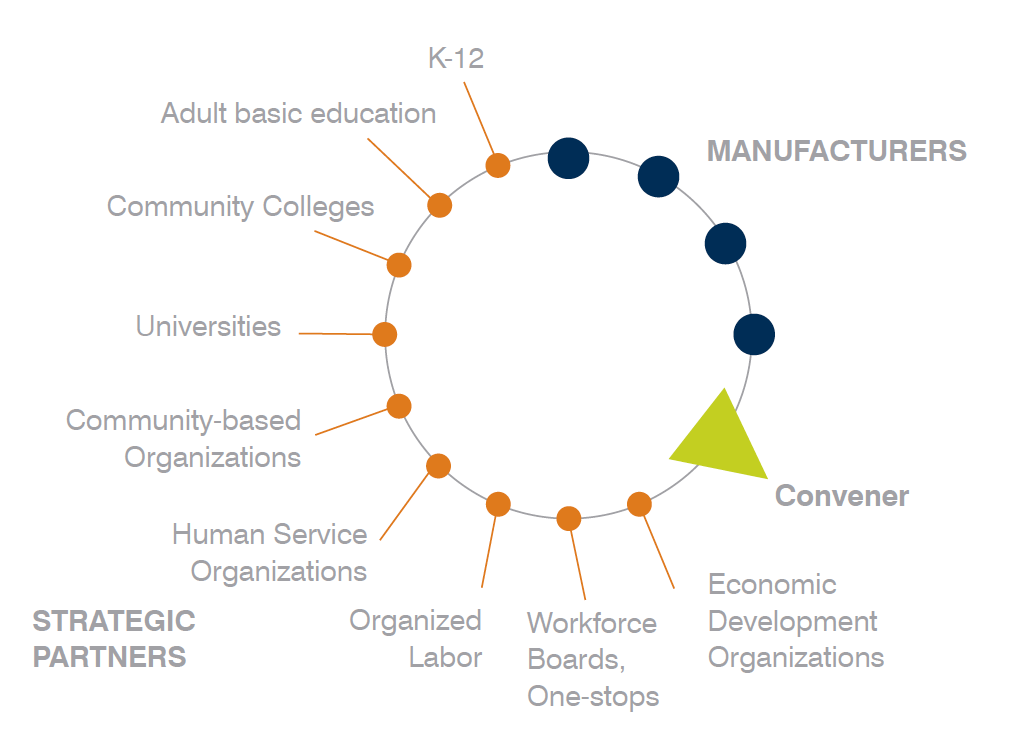Industry Sector Partnerships: What They Are and Why They Work
 Industry Sector Partnerships are a proven workforce development strategy that put employers in the driver’s seat and have demonstrated effectiveness across the country. Manufacturers within a regional labor market work together to influence alignment around common solutions with education and training, economic and workforce development, and
Industry Sector Partnerships are a proven workforce development strategy that put employers in the driver’s seat and have demonstrated effectiveness across the country. Manufacturers within a regional labor market work together to influence alignment around common solutions with education and training, economic and workforce development, and
community organizations.
| EFFECTIVE INDUSTRY SECTOR PARTNERSHIPS: |
BENEFITS TO MANUFACTURERS: |
- Identify common issues, challenges and opportunities across individual employers;
- Collectively address the priority needs of industry;
- Communicate industry priorities to policy makers and workforce development partners, enabling them to design responsive solutions;
- Address current and emerging skill gaps, both short- and long-term;
- Provide a means to engage directly with industry across traditional boundaries;
- Better align programs, education/training curriculum and other resources serving employers and workers.
|
- Systems change in response to business needs
- Reduced duplication and system inefficiencies
- Maximized resources and services
- Results in more streamlined services
- Helps manufacturers fill jobs more quickly
- Creates a pipeline of future workers
- Builds career pathways with seamless transitions from one educational stepping stone to another
- More powerful voice
- Influence training programs
- Impact policy
- Attract funding
- Mechanism for ongoing feedback loop with various education, training and workforce programs
- Better results (placement, earnings/benefits, retention, productivity)
- Firm-to-firm networking
|
| KEY COMPONENTS: |

|
- Led by employers – to ensure the system is truly demand-driven and will lead to better outcomes for individuals
- Focused on a single industry – to allow employers to connect with peers from their own industry, identify needs beyond basic workplace skills, and dive deeply into the technical needs of the industry
- Regional – to address unique needs of subsectors while reflecting the true dynamics within a regional economy
- Convened by a neutral intermediary – to align all relevant partner programs and resources as solutions to identified industry needs
|
Industry Sector Partnerships are a proven workforce development strategy that put employers in the driver’s seat and have demonstrated effectiveness across the country. Manufacturers within a regional labor market work together to influence alignment around common solutions with education and training, economic and workforce development, and

